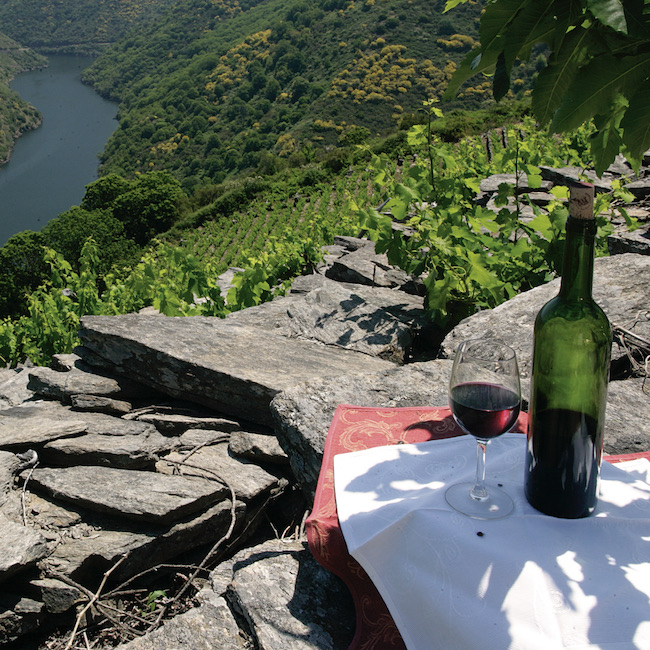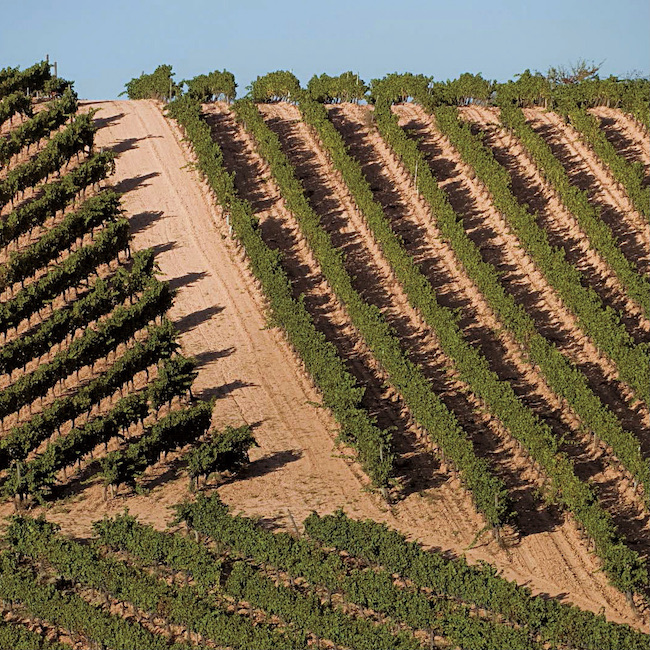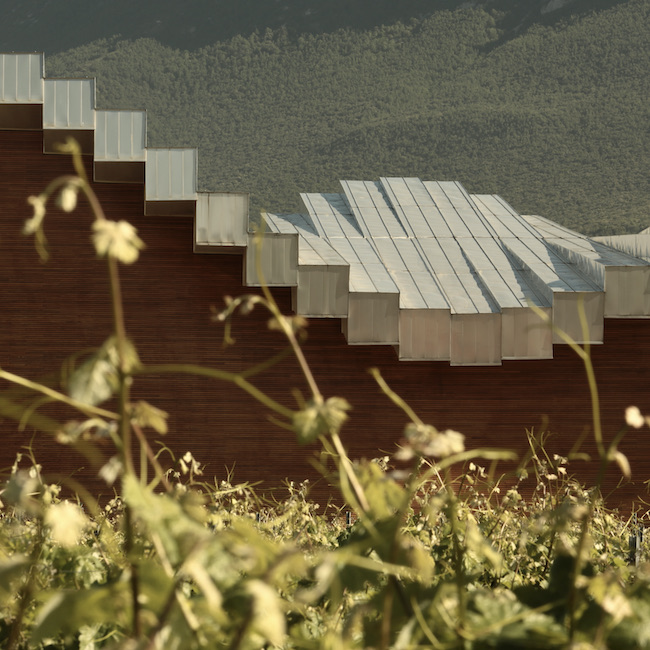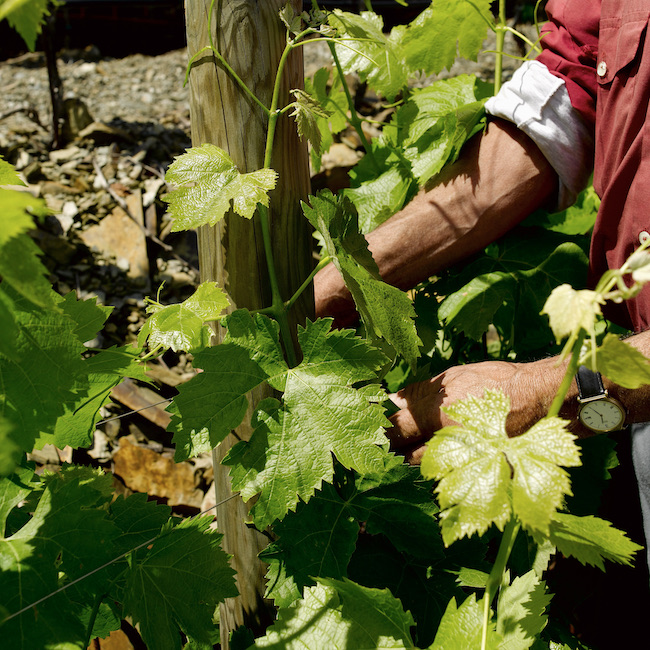by Patricia Langton
.png.transform/rendition-xs/image_image%20(1).png)
For growers and winemakers across Spain 2022 will be remembered for an exceptionally long, hot summer and very dry conditions which resulted in a challenging growing season right up to the all-important decision making over picking times. It was a most unusual year in many respects including the very early harvest dates yet the outcome proved to be better than expected in terms of both quality and yields.
For growers and winemakers across Spain 2022 will be remembered for an exceptionally long, hot summer and very dry conditions which resulted in a challenging growing season right up to the all-important decision making over picking times. It was a most unusual year in many respects including the very early harvest dates yet the outcome proved to be better than expected in terms of both quality and yields.

by Patricia Langton
The pattern for annual rainfall was generally significantly lower than average though some areas fared better than others over the winter and spring period making them better placed for what was to follow. The spring period, which is always an important period for establishing the yield of the forthcoming harvest, was unusually short but largely unproblematic. Indeed after favourable weather for bud break vine development was soon faster than the ideal pace for many growers. Weather more typical of a Spanish summer arrived early, in May, marking the start of five months of relentless hot, dry conditions.
Forest fires affected some wine regions including areas of Galicia, Navarra and Catalonia with some impact on vineyards not just due to the fires but as a result of wildlife being displaced. As the season progressed, many described intense work in the vineyard - good canopy management was important to protect vines from higher than average summer temperatures, especially for early-ripening whites and more sensitive varieties. As the extreme weather continued into August, day and night, there were concerns over vine stress, halts in maturation and uneven ripening.
The impact of the extreme weather varied according to a number of factors. Regions with a coastal influence - notably an Atlantic influence and vineyards at higher altitudes benefitted from fresher temperatures especially Rioja Alta, Ribera del Duero and areas of Aragón. Some areas had the advantage of irrigation and soil type was another key factor - in such a hot year the vines planted in the most suitable areas generally coped better as well as more established vineyards featuring older vines with deep root systems.
The harvest dates were around two weeks earlier than a typical year with growers keenly watching acidity levels for both white and red varieties but it was also a question of patiently waiting for complete ripeness. Curiously it was often the case of vineyards in hotter areas ripening later than usual while those in cooler areas ripened earlier than usual. Later-ripening white varieties, including Albariño and Verdejo, and red varieties benefitted from the early autumn rains and lower temperatures.
As for quality it was often described as ‘exceptional’, ‘near perfect’ or even ‘the best ever seen’ thanks to a remarkable absence of fungal disease. This is also expected to be a good year for organic wines for the same reason.
Many of Spain’s best known indigenous varieties performed well this year albeit with slightly lower acidity levels. There is certainly a lot of excitement about Garnacha this year from many different regions. Everything came right for this variety from mild spring conditions which favoured a good fruit set and a long ripening period which enabled this Mediterranean variety to thrive together with its resistance to drought.
As for yield, the outcome was better than expected with the final crop likely to reach a similar level to the 2021.
Spain’s 2022 vintage: 39.5-40 million hectolitres (forecast)*
* source: Observatorio Español del Mercado del Vino (OEMV)

Vintage highlights:
Around the regions….
Galicia
The crop was generous in Rías Baixas if slightly down on the record harvest of 2021. July and August were very dry resulting in no issues with disease but vine development slowed due to the dryness. The early autumn rain in September was timely allowing Albariño vines to fully ripen.
Enologist Iria Otero who makes Vintae’s Atlantis wines described “perfectly healthy grapes with less acidity than in other years but well balanced with great aromas”. This isn’t a vintage showing a strong Atlantic style but the quality was ‘spectacular’ in her view. At Lagar de Cervera ángel Suárez said that their vineyards at O Rosal and El Salnés didn’t suffer from the summer heat thanks to their proximity to the coast. “The September rains were a godsend to allow the grapes to ripen fully and then the rain held off over the harvest period with no interruptions”. He added: “In the winery we worked a bit differently given the climatic conditions - we didn’t need to do malolactic fermentations given the perfect balance in the Albariño grapes for quite a structured, fruity style.”
For Monterrei, where Godello is the main white variety, there was satisfaction over quantity and quality after a gradual harvest. In the early stages of vinification the wines were showing medium-high intensity and lively freshness.
In Ribeiro rain was also welcome, especially on 12th and 15th September for main varieties (white grapes) Treixadura, Torrontés, Caíño Blanco and Loureira. Technical director at the region’s Consejo Regulador Zurzo Rodríguez commented on the strong varietal character in all varieties, excellent fruit quality and high potential for fine wines.
Meanwhile in Ribeira Sacra the warm, dry conditions resulted in lower yields for leading grape Mencía with ripeness and alcohol levels generally similar to vintages of the last decade.
Further inland the weather was more challenging for Valdeorras this year. Here frost hit vineyards in April coinciding with bud-break which led to concerns over yield. Thankfully the outcome was better than expected for the region thanks in part to new plantings of Godello coming on stream.
Rías Baixas: 40.9 million kg, one of the most abundant to date, 6.6% less than 2021
Monterrei: 6.5 million kg
Ribeiro: 10.3 million kg
Ribeira Sacra: 6 million kg
Valdeorras: 6.5 million kg

Castilla y León
Bierzo’s crop of 11 million kg - mostly red Mencía grapes - was somewhat lower than the previous year’s vintage after some stormy weather, dry conditions and vineyards being damaged by the wild boar population being displaced by fires in mountainous forest areas. Grape quality was high boding well for this year’s vintage.
For Cigales the harvest turned out well in terms of both quality and quantity indeed the crop was more generous than expected, up 11% on 2021 with structured wines expected for whites, rosés and reds from this vintage.
Picking in Ribera del Duero started earlier than usual, on 30th August, and it was also one of the longest in the DO’s history lasting until mid-November with the last Tempranillo (Tinto Fino) grapes. The region’s report describes the harvest as “one of the most complex and diverse harvests with very heterogeneous fruit of different qualities depending on the terroir and circumstances influencing it and the time of harvest”. After a slightly delayed ripening period due to the extreme weather, September rains were welcomed to allow vines to reach maturity. The harvest proceeded at a steady pace with grapes showing optimum health across all varieties.
Intense work was needed in the vineyard to achieve the required fruit quality. At Áster, with vineyards around Anguix (Burgos), the number of bunches on vines was carefully controlled to maintain balanced ripening and canopy management was also important especially in vineyards with greater exposure to the sun, as enologist Alejandro López explained. He added: “Some of our vineyards are located at 800m, a very high altitude for viniculture, (especially in a year like this) and this altitude ensures good acidity in the fruit and the required acidity for aged red wines”.
The white variety Albillo Real is becoming more established; this year there was 1.2 million kg of the variety, up 35% on last year thanks to the variety faring well in dry conditions and more vineyards coming on stream. All varieties showed strong aromatic profiles with red wines expected to be very structured and complex from this vintage.
The harvest in Rueda was one of the earliest and longest in the region’s history with a very positive outcome in terms of both quality and volume indeed the crop was particularly high this year. In the usual pattern harvesting started for earlier ripening varieties - Sauvignon Blanc and Chardonnay - on 16th August with the main gape, Verdejo, following. Santiago Mora, general manager at the Consejo Regulador said: “This year’s harvest was marked by sustained high temperatures and scarce rainfall, two factors that helped prevent fungus and humidity issues in the grapes to ensure excellent quality. That said, it was also the longest harvest in history, since the heat meant that the grapes ripened in an unbalanced way.” Patience was therefore required until fruit reached optimum ripeness and a thunderstorm on 28th August proved to be timely bringing much needed rain to alleviate vine stress.
The 2022 wines show intense fruit quality and good acidity and the outlook looks very positive for this vintage from Rueda.
Meanwhile in Toro the crop exceeded early forecasts. Vines were offering generous amounts of grapes but berries were smaller than usual. After the intense heat of the summer there was very favourable weather for the final stages of ripening. At Matsu enologist Martín Padín said: “In early September the rain came and lower temperatures with a difference of 20 degrees between day and night and this was beneficial for ripening.” He was satisfied with the final quality and although acidity levels were a bit lower young wines are showing good freshness.
Bierzo: 11 million kg
Cigales: 8.5 million kg
Ribera del Duero: 105 million kg
Rueda: 155.5 million kg
Toro: 24.6 million kg

Rioja and Navarra
In terms of rainfall Rioja fared better than many other regions thanks to good amounts in November and March. The rest of the growing season followed the general pattern with a very dry and hot growing season though Rioja Alta and Alavesa had some rain in the latter part of August.
Summer temperatures were much higher than usual, even in Rioja Alta, the cooler part of the region. At Bodegas Martínez Lacuesta, Luis del Águila recalls “temperatures as high as 43º, around 10º higher than a typical year, and hot nights as well” while Vintae’s Richi Arambarri remembers unusually warm ‘tropical weather’ in September before milder October weather allowed “complete maturity for all grapes” including Graciano.
The harvest started on 10th August, much earlier than usual, with growers anxious to preserve acidity and avoid overly high levels of alcohol, especially for white varieties such as Viura and Tempranillo Blanco. It became more gradual to achieve balanced ripening extending into the first fortnight of October.
Pablo Tascón is head winemaker at Barón de Ley which is located in Rioja Oriental. Looking back on this year he said: “As Rioja Oriental is the hottest part of Rioja the extreme weather had a greater impact. We had to pick earlier and we gave more importance to acidity and PH levels than potential alcohol particularly in the case of fruit destined for Reserva and Gran Reserva wines.” Interestingly the outcome for Tempranillo and Garnacha was the opposite of a typical year as he explained: “The yield for Garnacha was good thanks to an exceptionally good fruit-set - that’s not usually the case - while the fruit-set for Tempranillo was poor and there were less berries resulting in very rapid ripening for Tempranillo and more steady ripening for Garnacha. Garnacha copes well in very dry conditions and in such a challenging year as this one the variety performed very well.”
This year vines in cooler, higher areas often reached full maturation earlier than those in hotter areas due to less vine stress and steady, uninterrupted ripening. Such was the case for Vintae’s vineyards in Alto Najerilla. Indeed the effects of climate change are clear: “In the 60s, 70s and 80s the vines (here) would rarely reach full maturity. Now we get full ripeness almost every year.”
The yield for Rioja’s harvest is only slightly below the 2021 figure. Wine styles are described as fruity and structured with slightly lower acidity levels than usual.
Navarra’s crop was the same in terms of yield to 2021. Here too Garnacha fared well yielding ‘normal volumes’ whereas yields for Tempranillo were low.
Rioja: 410 million kg (provisional figure)
Navarra: 60 million kg
Aragón
For Cariñena there were some anxious times in the early part of the growing season. April rains led to optimism over eventual yields but growth slowed and high early summer temperatures dashed hopes of generous yields. Thankfully the conditions in August and September were more favourable and final yields were only marginally lower than an average year. High quality fruit showed concentrated flavours and ripe skins giving wines strong colour, aromas and structure for varieties such as Garnacha and Cariñena.
Rain in late September was particularly timely in Calatayud. Here the harvest was the earliest on record starting with earlier ripening varieties such as Macabeo on 5th September. Garnacha is the leading grape by far and this was one of the regions where the variety coped particularly well despite the challenging weather. Both the quantity and the quality surprised growers and bodegas as the harvest progressed.
In neighbouring Campo de Borja, another major source of Garnacha, the outcome was very similar. Here the vintage is expected to be one of the best of the decade.
In Somontano the yield varies according to soils, location and whether vineyards had irrigation or not. Some vineyards, in the foothills of the Pyrenees, benefitted from fresher temperatures this year while 45% of the region’s vineyards are equipped with irrigation. Better yields in these locations compensated for lower production elsewhere. Notably there was more Chardonnay and Gewürztraminer this year. Cabernet Sauvignon, the most planted red, accounted for 22% of the crop. Other key reds include Merlot, Tempranillo and, the last to be harvested, Garnacha. A fine vintage is expected thanks to excellent fruit quality.
Calatayud: 13.5 million kg
Campo de Borja: 28.5 million kg
Cariñena: 80 million kg
Somontano: 17.2 million kg
Vinos de Madrid and Cebreros
After a vintage lasting 66 days, growers in Cebreros (Ávila) brought in 40% more fruit than last year thanks to Garnacha, the main variety, and white variety Albillo Real both coping well despite the challenging climate. The DO extends over 480 hectares, some located in the prime Sierra de Gredos area, and currently comprises 22 bodegas.
For Vinos de Madrid sufficient rainfall in April and May helped to avoid vine stress over the dry summer months and maintain vine health according to technical director Mario Bravo. This was particularly the case for Garnacha - growers witnessed “an exceptional fruit-set” after a frost-free spring with vines maturing to give smaller bunches than usual but very healthy grapes in what is expected to be a very good year for the wines from the variety.
Cebreros: 1.1 million kg
Vinos de Madrid: 9 million (provisional figure)

Catalonia and Majorca
In Catalunya winter and spring temperatures were warmer than usual with scarce rainfall and while the growing season got off to a good start there were early signs that vines would yield less than last year. This was confirmed as very hot periods and drought followed over the summer with some areas faring better than others and access to irrigation also being a factor.
The harvest, starting with Chardonnay, began 7-10 days early and also finished early with almost all red varieties having been picked by late September. The lower yields were more significant across red varieties with Tempranillo, Cabernet Sauvignon and Cariñena all down by 20% or more compared to last year. But fruit quality was reported to be very good with grapes showing excellent ripeness and good acidity while alcohol levels were 12.6% on average, a little above those of 2021.
There was satisfaction in Montsant in terms of both quality and quantity thanks to favourable weather over the harvest period. The crop was more generous than expected and in line with the average size of the last decade.
In both Montsant and Priorat the indigenous varieties Garnacha and Cariñena showed good resistance to extreme heat and dry conditions with timely summer storms helping to avoid water stress. In Priorat older vines and those located on acidic slate soils offered especially good fruit quality.
The harvest in Binissalem, excellent in terms of quality, was up by 2% thanks to good yields from white varieties, notably the leading white variety Moll which performed particularly well this year. For reds the outcome varied considerably according to variety and area: the yields were good for Gorgollassa, up 40%, and Merlot but modest for Manto Negro, Cabernet and Syrah.
Catalunya: 42.9 million kg
Montsant: 7.5 million kg
Priorat: unavailable
Binissalem: 1,2 million kg
The Levant
In Jumilla the red variety Monastrell accounts for 80% of the DO vineyard area and this variety is well adapted to dry, hot conditions. The wines show good acidity and potential from this vintage.
Thanks to spring rains and the dry, long summer in Valencia, Moscatel grapes showed excellent quality in terms of acidity and sugar content. “This is one of the best years, unbeatable, and we’re expecting excellent wines, both sweet and dry,” said Estefanía Díaz at the Consejo Regulador.
Jumilla: unavailable
Valencia: unavailable
Production in Castilla La Mancha is expected to be 19.5-20 million hectolitres, 10% less than 2021 in this region.
Cava
High temperatures and very low rainfall resulted in a ‘significant reduction’ in the harvest for Cava across its production areas which extend from Extremadura to the Ebro Valley through to its heartland in Catalonia and vineyards in the Levant. According to the Consejo Regulador: “This season’s grapes have been exceptionally healthy throughout the entire growing season and were harvested with a very good level of alcohol as well as sufficient phenolic ripeness and acidity.”
Cava: unavailable